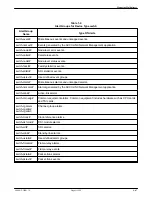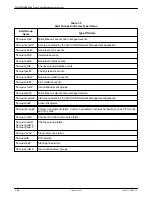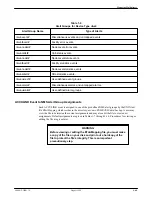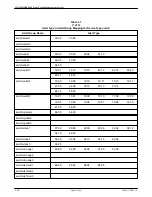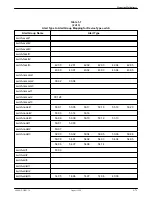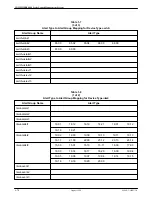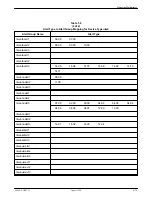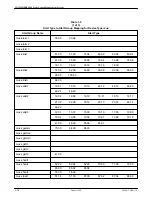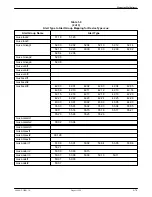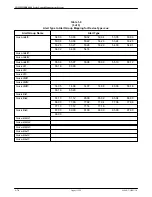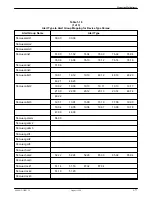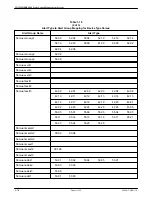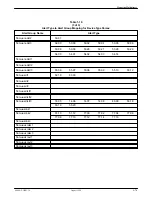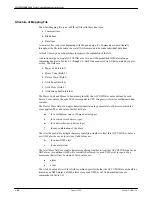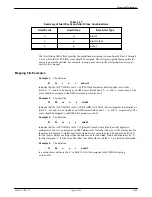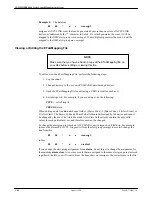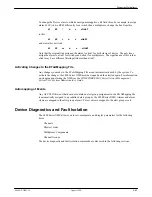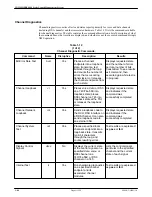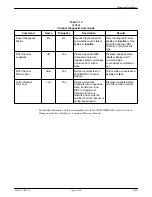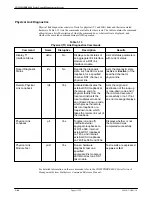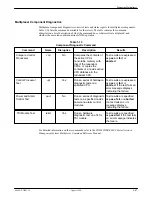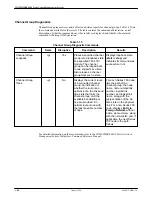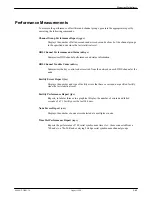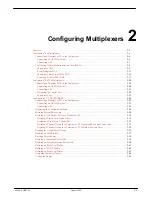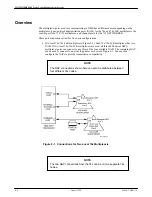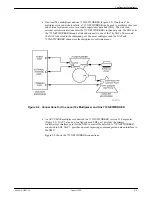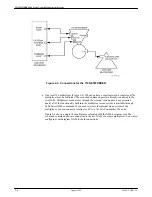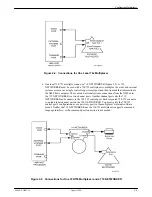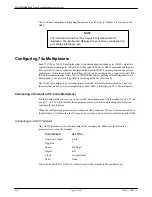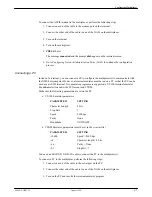
Managing Multiplexers
1-81
6800-A2-GB21-10
August 1994
Table 1-11
Summary of Alert Event and Alert Class Combinations
Alert Event
Alert Class
Nms Alert Type
n
a
alarm
c
a
alarm clear
n
e
event
The Alert Group Suffix field specifies the predefined alert group (chosen from Tables 1-2 through
1-6) to which the ACCULINK event should be assigned. The alert group prefix that specifies the
device type must be omitted. For example, to map a mux event to the alert group mux-cmneqpl,
specify only cmneqpl.
Mapping File Examples
Example 1:
The data line
53
16
s
n
e
noderr2
indicates that the ACCULINK event 53.16 (TSI Clock Hardware Fault) applies to switches
(field 3 = ‘s’) and is to be treated as an NMS event (fields 4 and 5 = ‘n’ and ‘e’, respectively). The
event should be assigned to the NMS alert group swtch-noderr2.
Example 2:
The data line
51
00
m
n
a
alink1
indicates that the ACCULINK event 51.00 [ALARM Active Red (Carrier)] applies to multiplexers
(field 3 =‘m’) and is to be treated as an NMS alarm (fields 4 and 5 = ‘n’ and ‘a’, respectively). The
event should be mapped to the NMS alert group mux-alink1.
Example 3:
The data line
51
01
m
c
a
alink1
indicates that the ACCULINK event 51.01 [Alarm Cleared Active Red (Carrier)] applies to
multiplexers and is to be treated as an NMS alarm-clear. Note that this event is the alarm-clear for
the alarm in Example 2. Alarms and alarm-clears always occur in pairs. The minor code (field 2)
for the clear is always one higher than the minor code for the alarm. Field 4 should always be ‘n’
for the alarm and ‘c’ for the clear. The other four fields (that is, fields 1, 3, 5, and 6) should match.
Example 4:
The data line
13
00
n
n
e
nodst3
is a networker event (note the ‘n’ in field 3). It will be assigned to the NMS alert group
ntwk-nodst3.

